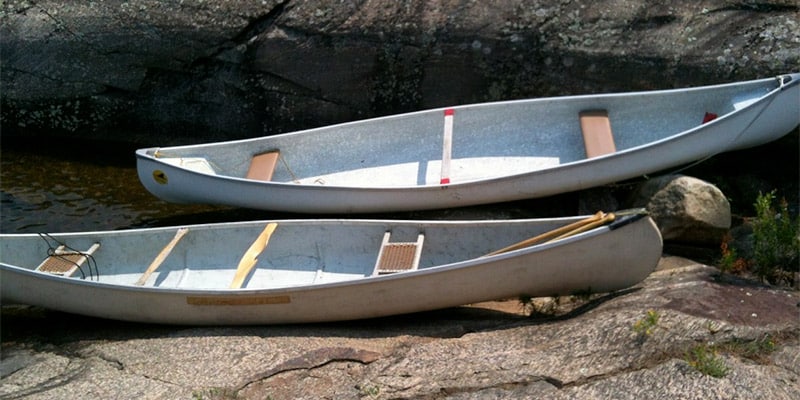Many high-quality canoes are made out of aluminum. These canoes come with durable paint from the factory.
However, the paint will dull after a while, especially if you use the canoe a lot.
Many people are not sure whether they can paint an aluminum canoe themselves.
After all, the factory paint is made out of a special blend that gives it its durability and waterproofing properties.
However, this type of paint is sold directly to consumers. It is also fairly easy to apply.
The answer to the question “Can you paint an aluminum canoe?” is a resounding “yes.”
In fact, it is important for you to paint your aluminum canoe when its factory paint starts to wear off.
Read on to learn more about painting your own aluminum canoe.
Why It’s Important for You to Paint Your Aluminum Canoe

Not only is it possible for you to paint your aluminum canoe, but it is also actually important that you do so.
Aluminum is a tough and corrosion-resistant material.
However, it is not completely immune to corrosion.
In addition to jazzing up the look of a canoe, its paint also protects the metal underneath from corrosion.
This is why it is important for you to repaint your aluminum canoe if the paint starts to wear off.
If you do not do so, the metal will corrode more quickly and you will have to get a new canoe sooner than you should otherwise need to.
How to Paint an Aluminum Canoe
Ready to paint your canoe? Follow the steps below.
1. Gather the Necessary Items
The first thing you need to do when you are getting ready to paint an aluminum canoe is gathering all the necessary items.
You will be able to complete the painting process more effectively and efficiently if you set aside everything you need beforehand.
The items you need include:
- electric fan
- paint thinner
- primer
- paint sprayer
- paint roller
- paint
- clear coat
- soap
- brushes
- bucket
- power spray nozzle
- plastic or paper coverings
Once you have gathered these items, it is time for you to prepare a suitable area.
2. Prepare a Painting Area
You will need a relatively large and open area to paint your canoe.
Your garage will work as long as you have cleared enough space.
You will need to prop the boat up on two sawhorses, as this will make it much easier to work on.
It’s best to place the boat on the sawhorses with the inside facing up at first, then turn the boat over when you need to work on the bottom.
3. Prepare the Boat for Painting
The next step of the process is for you to prepare the boat itself.
This may be the most arduous part of the process, but it shouldn’t be that bad as long as you have the right materials.
You will need to carefully sand off the paint and other coatings on both the inside and outside of the canoe.
Keep in mind that you are going to paint both the inside and the outside of the boat, as the inside also needs to be protected from corrosion.
You should use 40 grit sandpaper at first, then 80 grit sandpaper to finish the job.
When you have sanded the paint and coatings completely off the boat, it’s time to wash the canoe.
First, wash the boat with soapy water like you normally would and scrub it down.
Next, use the power spraying equipment to remove every last speck of dirt and bit of residue.
The cleaner the boat is when you apply the paint, the better the paint job will be
4. Put on the Primer
Once you have the paint sanded off and the boat cleaned, it’s time to apply the primer.
You need to mix a pint of paint thinner into a gallon of primer.
This will ensure that the primer gets into all the nooks and crannies of the boat.
When you’ve mixed the primer, you can apply it using either a roller or a brush.
You should apply it to one side of the canoe and let it dry.
Once it has dried, flip the canoe over the put the primer on the other side.
When this side has dried, it’s time to paint the boat.
5. Paint the Boat
After the primer has dried, you can finally start painting the boat.
Of course, you should only use water-resistant paint.
You can easily find boat paint at a boat supply store.
You should paint one side with one coat and let it dry before flipping the boat over and painting the other side.
You’ll want to apply at least two coats.
When the paint is dry, apply the clear coat in the same way.
The clear coat will provide an extra layer of protection.
